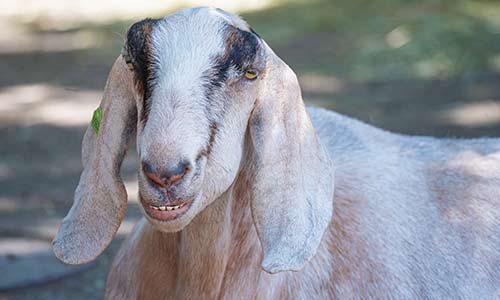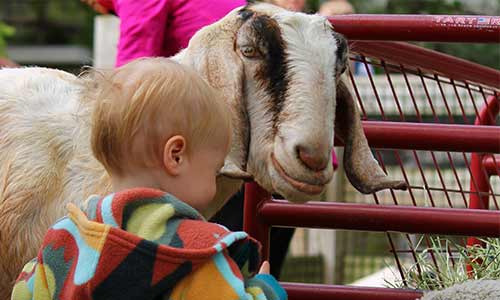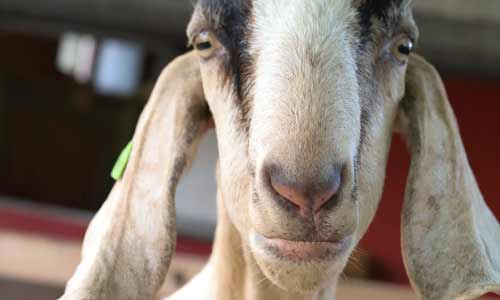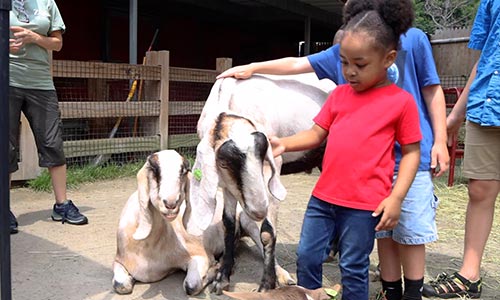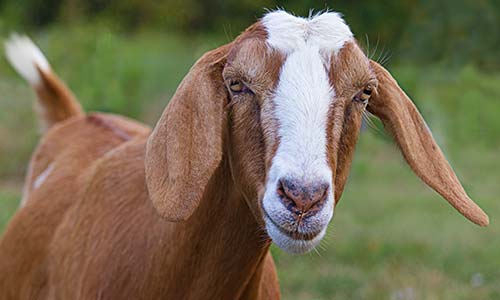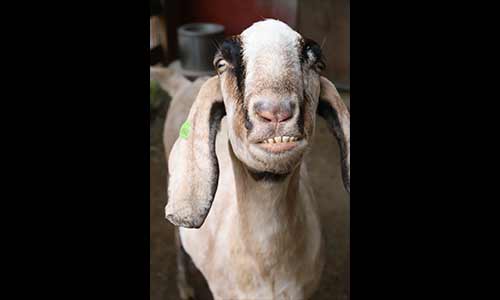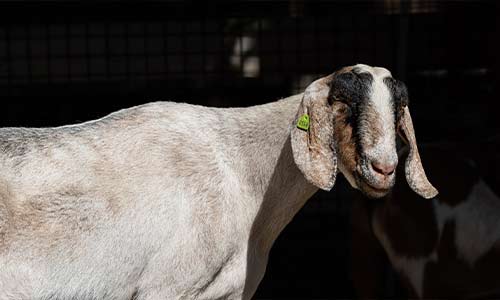Nubian Goat
Capra aegagrus hircus
About the Nubian Goat

Class: Mammalia
Order: Artiodactyla
Family: Bovidae
Genus: Capra
Species: aegagrus
Subspecies: hircus
Known for their friendly nature, Nubian goats are one of the most popular breeds of goats. They were first bred in England in the 1800s when breeders introduced goats from India and Africa and crossbred them with English goats. The parents’ diversity helped create a new breed with characteristics that were valuable for people seeking high-quality milk and sources of meat. In England, this species is referred to as “Anglo-Nubian” goats.
Nubian Goat Facts
Conservation:
Nubian goats are considered a “heritage breed.” A species that’s a heritage breed has a long history and lineage, often tracing back to traditional farming practices and specific regions or countries. These breeds are usually well-adapted to their local environments and bred for specific traits over many generations. Heritage goat breeds are extremely valuable because they help preserve genetic diversity within the animal kingdom. Without these breeds, we risk losing traits that could be essential in helping the species adapt to environmental changes or new diseases.
You Can Help:
You can help by buying products from local farmers who raise heritage breeds. You can also become a member of the Livestock Conservancy(opens in a new tab) or volunteer with them
General:
Nubian goats were first bred in England in the 1800s when breeders introduced goats from India and Africa and crossbred them with English goats. The parents’ diversity helped create a new breed with characteristics that were valuable for people seeking high-quality milk and sources of meat. In England, this species is referred to as “Anglo-Nubian” goats.
Known for their friendly nature, Nubian goats are one of the most popular breeds of goats. Nubian goat milk is known for its sweetness, higher butterfat and protein content compared to other goat breeds. It’s also good for making goat cheese.
Appearance:
Nubian goats have long, drooping ears and large, almond-shaped eyes. They have wide foreheads and rounded noses. Their legs are long, and they have short, glossy coats. These goats can be both solid or multicolored. Black, tan, red and chestnut are their predominant colors, and they may have white/ pale patches or mottles.
Size:
- Adult male: 36 inches tall, 175 pounds
- Adult female: 32 inches tall, 130 pounds
Diet:
Nubian goats eat grasses, leaves and twigs.
Reproduction:
This species is sexually mature at 8 to 9 months of age. Their breeding season runs from July through December. Mothers usually give birth to two kids.
Habitat/range:
Originally bred in England, Nubian goats are broadly distributed in the U.S., Canada, Latin America and Australia. Smaller numbers are also bred in Asia and the Middle East.
You Can Find This Animal in the Barnyard
You might also like
At Franklin Park Zoo:
At Stone Zoo:

